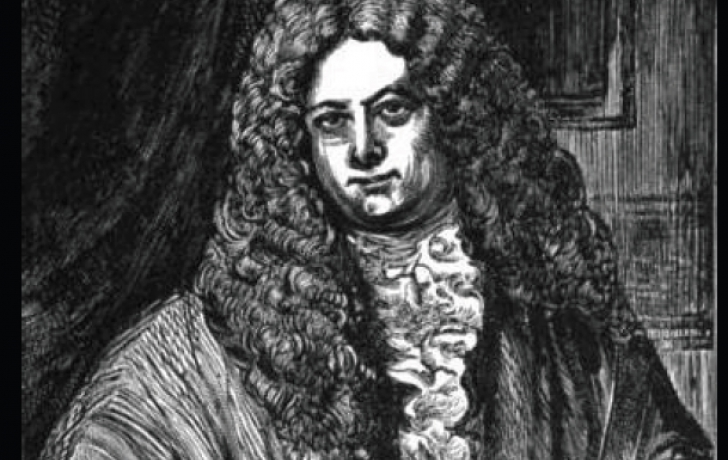City Finally Finds a Home for Wandering Statue of 350-Year-Old NYC Mayor
Homeless and unwanted, a 355-year-old former mayor of New York City is finally returning to a place of distinction.
Rising 15 feet atop his pedestal, the bronze statue of Abraham De Peyster, Dutch-born mayor of New York City during the late 1600s, has been bounced from park to park over the years and languished in storage since 2004. Now, it appears, he has found a home.
“We’ve looked at about 30 locations for Mr. De Peyster over the past dozen years or so and for whatever reason every one has been eliminated because of location or interference with utilities,” George Bloomer, a Parks Department design supervisor, told Community Board 1’s Seaport Committee last month.
The proposed new location is in the northwest section of Thomas Paine Park, at Worth and Lafayette streets.
CB1 voted unanimously in favor of the location, though given De Peyster’s history, some wondered how long he would stay. “This poor guy has been evicted from [so many] places,” said board member John Fratta.
The move was scheduled to be considered by the city’s Art Commission on Oct. 1.
De Peyster was a man generous with both his money and his land. He pushed for the city to care for its paupers and donated space for a new city hall on Wall Street, the site of Federal Hall. In addition to serving as mayor, he was also a city comptroller, alderman and judge.
“Quite aside from any family pride, I think it’s just a good idea to get it back on view,” William Ambler, an art historian and direct descendent of De Peyster, told the Trib in a phone interview. “He is most famous for being mayor but he was also the Chief Justice of the Supreme Court in what was then the colony of New York. So putting him in front of the courthouse is also an appropriate spot. And he did live on Pearl, then Queen Street, so it’s nearby there as well.”
Commissioned in the late 1800s by one of De Peyster’s great-great-great-grandsons, the seated solemn figure was created by the sculptor George Edwin Bissell. But no sooner had work begun on a foundation for the statue in Battery Park than it became the target of criticism and the city had to look for a new location.
“The sentiment which promotes the erection of the statue to Abraham De Peyster is altogether commendable,” the New York Times wrote in spring of 1895. “But Battery Park is not the place for the effigy. There is no room for it. We have gone too far in the park statuary already.”
Over yet other objections, the statue went to Bowling Green in 1896. (“Bowling Green is such a historic spot,” the president of the National Sculpture Society told the Times, “that the question naturally arises why it is not reserved for some artistic group, rather than merely a portrait statue.”)
But after only a short time in Bowling Green, De Peyster was donated to Franklin & Marshall College in Pennsylvania. (According to the school’s website, it was a controversy over the scale and location of the statue that forced the move.) A slightly smaller replica was fabricated and placed back in the park.
There it stayed for 76 years. But in 1972, Bowling Green underwent a major renovation and it was decided that De Peyster had to go.
Next stop: Hanover Square. Atop a new pedestal, he stood there until 2004, when the Parks Department turned the site into the British Memorial Garden. This time, he had no place to go but storage. But Jonathan Kuhn, the Parks Department’s director of Landmarks and Relics, was determined to find him a home.
One of the sites he selected was Tribeca’s Bogardus Garden, at Reade and Hudson streets. The community group that oversees the planted triangle said no.
“It’s the James Bogardus Garden and having another person in there is confusing,” said Victoria Weil, president of Friends of Bogardus Garden. “We have a vision for the future of the space and a large sculpture of an early mayor is not part of that vision.”
It could be said that similar confusion may lie ahead when De Peyster resides in a park named for a different historical figure, Thomas Paine.
“Our view would be that the city ought to put a statue of Thomas Paine in Thomas Paine Park,” said Martha Spiegelman, treasurer of Thomas Paine Friends, Inc., a group that worked with the Parks Department to have a plaque about Thomas Paine placed in the park in 2009.
A statue of someone other than Paine, Spiegelman said, may diminish the park’s identification with the man it honors. But De Peyster descendant William Ambler defends the decision, partly for its recognition of the Dutch, who established the city as a center of commerce and, for its time, a place of tolerance.
“It’s appropriate to have at least one or two of these old Dutch boys commemorated somewhere,” he said.
—Additional reporting by Carl Glassman




